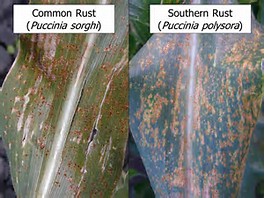Tar Spot In Corn
- Taylor Lewis
- Oct 12, 2016
- 2 min read
Tar Spot was first discovered and reported in the United States in 2015 in Indiana and later that season in Illinois. This year Tar Spot has been again found in Indiana and Illinois in addition to Michigan, Florida, and Iowa.
Symptoms of Tar Spot
Tar spot is recognized as small, raised black spot across the leaf surface. These spots are fruiting structure of the fungus that causes the tar spots. This can be seen in Figure 1. If these spots are viewed under a microscope, they will appear as hundreds of sausage- shaped filled with ascospores that are visible.

Figure 1: Tar Spot on the leaf surface
Beware of "look-a-likes"
As with most diseases, tar spot does have a few look-a-likes being common and southern rust. At the end of the growing season, both common and southern rust will turn from a orange-red color to a black color similar to tar spot. One way to tell them apart at the end of the growing season is by trying to scrape the spots off the leaves. With common and southern rust, you should be able to scrape the spores from the leaf unlike tar spot which cannot be scraped off. These look alikes are seen in Figure 2 and Figure 3.
Figure 2: Common and Southern Rust Figure 3: Tar Spot
Impact of Tar Spot
It is unlikely for tar spot to cause any yield loss when detected. The severity of the disease is very low and is detected late in the grain fill of the corn. While the impact is low, the fact that we have seen it for a second year suggests that we will see it again in the future.
Sources: Google Image & ISU Integrated Crop


































Comments